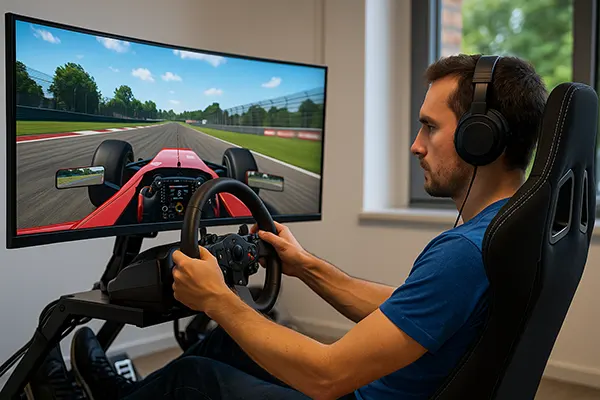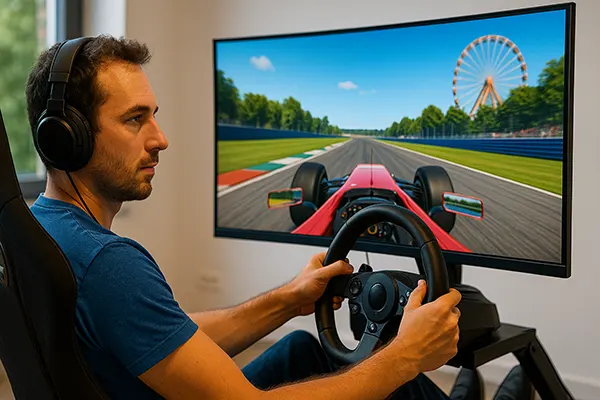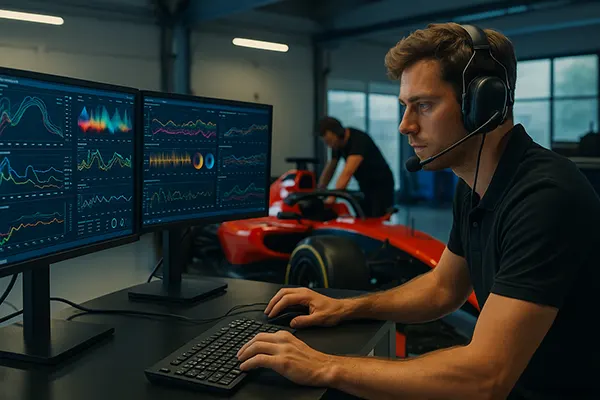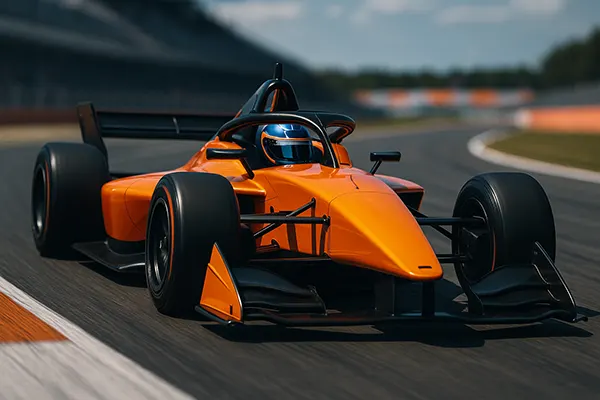
Can Motorsport Simulators Replace Real Training?
Motorsport simulators have become an essential tool for both professional and aspiring racing drivers. With the continuous evolution of technology, these simulators now offer a highly realistic driving experience. But can they truly replace real-world training? This question sparks ongoing debates among drivers, engineers, and trainers worldwide. In this article, we will explore the popularity of racing simulators, their technical capabilities, and whether they can be considered a complete training platform.
The Popularity of Racing Simulators Among Professional Drivers
Racing simulators have gained significant popularity among professional racers, including notable figures like Max Verstappen. Platforms such as iRacing and Assetto Corsa are now integral to many drivers’ training routines. These simulators provide an opportunity to practice racing lines, understand car dynamics, and develop mental stamina, all from the comfort of a dedicated setup.
The key appeal lies in the flexibility and accessibility of simulators. Instead of traveling to a circuit, drivers can practice in a virtual environment that closely replicates real-world conditions. The growing acceptance of simulators among racing professionals is evident, with many teams investing in custom-built setups that mimic the specific car and track configurations they encounter during real races.
Moreover, simulators are no longer seen merely as gaming tools. Instead, they have evolved into advanced systems equipped with force feedback steering, pedal systems, and motion platforms. This makes them not only immersive but also practical for honing precise driving skills.
Sim Racing as a Mental and Physical Challenge
Although simulators do not replicate physical forces experienced in a real car, they still demand intense concentration and precision. High-level competitions on iRacing, for instance, require drivers to maintain focus over long periods, mirroring the mental endurance needed on actual racetracks. Professional drivers often acknowledge that simulator racing enhances their cognitive processing and decision-making skills, crucial for real-life racing scenarios.
Additionally, the simulation of different weather conditions, tire wear, and track grip adds another layer of complexity, pushing drivers to adapt swiftly to changing situations. This adaptability is a key trait that professional racers aim to develop, and simulators offer a safe and controlled environment to practice these skills without the risks associated with real-world accidents.
Despite these benefits, the lack of g-force exposure and real-world risk factors remains a critical drawback, limiting the simulator’s role as a standalone training tool. Nonetheless, as a supplementary method, it is widely regarded as invaluable.
Technical Capabilities of Modern Simulators
The technological advancements in racing simulators have significantly closed the gap between virtual and real-world driving experiences. Modern systems are equipped with high-fidelity physics engines that accurately model car behavior, including weight distribution, tire friction, and aerodynamics.
Laser-scanned tracks are another breakthrough, offering precise recreations of real racing circuits. These virtual tracks capture every bump, camber, and curb, providing drivers with detailed familiarity before they hit the actual circuit. This level of accuracy helps racers develop muscle memory for braking points and cornering techniques.
Moreover, simulators now feature real-time telemetry data, enabling drivers and engineers to analyze performance metrics such as braking pressure, throttle input, and lap times. This data-driven approach allows for fine-tuning driving techniques, making simulators indispensable in modern racing preparation.
Limitations of Simulation Technology
Despite technological advances, simulators cannot replicate the visceral feedback of a real car. The sensation of lateral forces, tire grip fluctuations, and the physical strain on the body are aspects that simulators can only partially mimic. Consequently, drivers must supplement simulation training with actual track time to experience these physical dynamics.
Furthermore, simulator training often lacks the unpredictable variables present in real racing, such as mechanical failures or unexpected weather changes. These factors can significantly influence race outcomes and are difficult to simulate authentically.
Therefore, while modern simulators are exceptionally accurate, they are best utilized as complementary tools rather than complete replacements for real-world driving practice.

The Future of Simulators in Racing Training
As simulation technology continues to advance, it is likely that racing drivers will increasingly rely on these tools for preparatory training. However, the physical elements of real-world racing ensure that simulators remain a supplement rather than a substitute. Professional drivers who balance both methods will continue to gain the most significant advantage on the track.
The future may hold more advanced simulation technology, potentially incorporating virtual reality (VR) and haptic feedback to enhance the realism. As these systems evolve, they may address current limitations, bringing virtual training closer to real-life conditions.
Nevertheless, real-world training will always be indispensable. The unpredictability of real races, including changing track conditions and mechanical issues, is something simulators cannot fully replicate. Therefore, combining both simulation and actual driving practice remains the optimal approach for professional racers.
The Role of Simulators in Motorsport Development
Simulators not only serve as training platforms but also contribute to the development of racing strategies. Teams often use simulators to test new setups, experiment with car adjustments, and simulate race scenarios. This practical application enhances their utility beyond individual driver training.
Moreover, as motorsport evolves, the use of simulators for fan engagement and virtual competitions grows. E-sports championships like the F1 Esports Series are attracting a new generation of racing enthusiasts, blurring the lines between gaming and professional motorsport.
In conclusion, while racing simulators are invaluable in modern motorsport, they are best viewed as complementary tools rather than replacements. Their integration into professional training and race strategy development will continue to expand, shaping the future of the racing industry.




